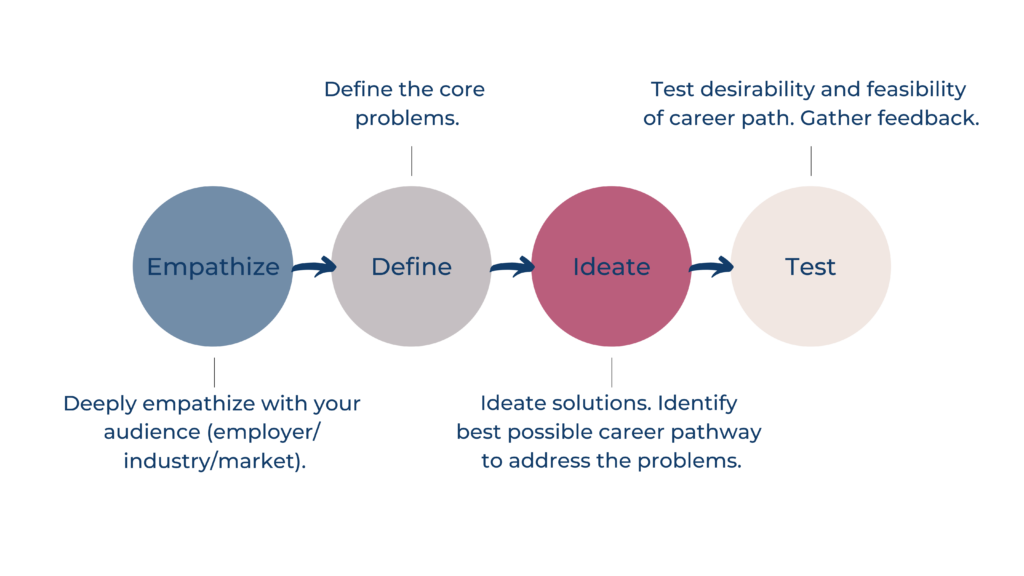Using the Design Thinking Framework to Explore Career Pathways
Our economy has transformed overnight and many of the positions that were available two years ago have become obsolete. The pandemic expedited the emergence and adoption of new technologies while others became outdated forcing companies to lay off, re-skill and hire individuals within all levels of the organization.
“The pandemic accelerated existing trends in remote work, e-commerce, and automation, with up to 25 percent more workers than previously estimated potentially needing to switch occupations.”
The future of work after COVID-19, McKinsey Global Institute, February 18, 2021
Crisis situations, like the COVID-19 pandemic, lead to hundreds of jobs being phased out but it also opens the window to new ones being imagined and created. This is where the design thinking framework becomes a useful tool to help professionals explore new career pathways.
“Rather than view this as a crisis of capitalism, it might better be understood as the sort of world-making event that allows for new economic and intellectual beginnings.”
The last global crisis didn’t change the world. But this one could, The Guardian, March 24, 2020
Design thinking is a human-centered approach to designing products and services based on a solid understanding of what customers want and need. From a place of current knowledge and evidence, the process helps individuals adopt a creative mindset to solve the problems their customers face. Design thinking has inspired several well-known products and services such as Airbnb, Uber Eats, Braun / Oral-B electric toothbrush, and PillPack.
Design Think Your Career is an adaptation of the design thinking process to help professionals understand the problems that employers are facing and ideate and test career solutions to those problems. Design Think Your Career is an iterative process through 4 stages, empathize, define, ideate, and test, as depicted and explained in further detail below.

Stage 1 – Empathize
The first stage of the design thinking process, Empathize, allows you to step into the minds of your target audience, whether it be a specific employer, industry, or market, and understand how they think and feel. During this stage, you leverage research and observation to understand your audience’s pains and the problems they are currently facing.
Stage 2 – Define
During the Define stage, you synthesize the information you gathered during the Empathize stage to clearly define your audience’s core problems. You identify connections and recognize patterns with your audience.
Stage 3 – Ideate
This is where the fun begins! Once the problem has been defined, you move into the free-flowing Ideate stage to brainstorm new solutions to the problem. This is a place where creativity and innovation are sparked and the possibilities for new career pathways are being imagined.
“The responses to the COVID-19 pandemic are simply the amplification of the dynamic that drives other social and ecological crises: the prioritization of one type of value over others.”
How will coronavirus change the world?, BBC, March 30, 2021
Stage 4 –Test
Testing allows you to identify the most desirable and feasible career pathway you can take to address problems identified during Stage 2. Since Design Think Your Career is an iterative process, the results generated during the testing phase are often used to redefine one or more problems and inform the understanding of your audience. Testing is an invitation to share your proposed career pathway with and gather feedback from clients, business contacts, mentors, coaches, advisors, trusted friends and, of course, your audience!
The result of the design thinking journey is the makings of a well-defined value proposition that you can carry forward in all aspects of your job search strategy.
Allow Talent Dharma to guide you through the Design Think Your Career process to explore and create new career opportunities in our transformed economy. Contact Alisa Bondurant at alisa@talendharma.com for more information.
